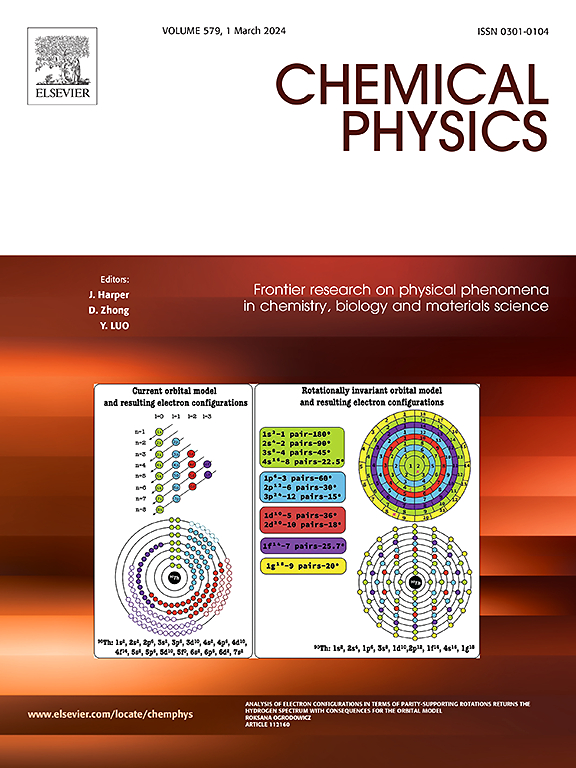The role of proton configurations in the absorption characteristics of trefoil-shaped Salicylaldehyde Azine derivatives: The electronic structure calculation analysis.
IF 2.4
3区 化学
Q4 CHEMISTRY, PHYSICAL
引用次数: 0
Abstract
In this study, we investigated the influence of proton configurations and molecular symmetry on the stability and absorption characteristics of trefoil-shaped salicylaldehyde azine derivatives synthesized by Naito et al.. Our energy comparisons revealed that the most stable proton configurations differ significantly between the ground and S₁ excited states. While the most stable ground-state structure did not exhibit absorption peaks in the experimentally observed region above 400 nm, the optimized stable configurations in the S₁ excited state did show prominent spectral features at these longer wavelengths. Further analysis of activation energies indicated that the structural transition between these configurations is energetically feasible in the S₁ excited state, suggesting facile proton rearrangements upon excitation. Classical molecular dynamics simulations demonstrated that structural distortions induced by thermal fluctuations also result in significant absorption at wavelengths beyond 400 nm. Additionally, solvent effects were found to induce a red shift in absorption spectra, although this influence was relatively minor compared to that arising from structural distortions. Changes in molecular symmetry were found to have only a negligible effect on spectral properties. These findings suggest that proton rearrangement and structural relaxation play critical roles in generating absorption at longer wavelengths.
质子构型对三叶草形水杨醛嗪衍生物吸收特性的影响:电子结构计算分析。
在本研究中,我们研究了质子构型和分子对称性对内藤等合成的三叶草形水杨醛嗪衍生物的稳定性和吸收特性的影响。我们的能量比较显示,最稳定的质子构型在基态和S₁激发态之间有显著差异。虽然最稳定的基态结构在400 nm以上的实验观测区域没有出现吸收峰,但S 1激发态的优化稳定结构在这些较长波长处确实表现出突出的光谱特征。进一步的活化能分析表明,在S₁激发态下,这些构型之间的结构转变在能量上是可行的,这表明质子在激发后容易重排。经典分子动力学模拟表明,热波动引起的结构扭曲也会导致波长超过400 nm的显著吸收。此外,发现溶剂效应会引起吸收光谱的红移,尽管这种影响与结构畸变引起的影响相比相对较小。发现分子对称的变化对光谱性质的影响可以忽略不计。这些发现表明质子重排和结构弛豫在产生较长波长的吸收中起关键作用。
本文章由计算机程序翻译,如有差异,请以英文原文为准。
求助全文
约1分钟内获得全文
求助全文
来源期刊

Chemical Physics
化学-物理:原子、分子和化学物理
CiteScore
4.60
自引率
4.30%
发文量
278
审稿时长
39 days
期刊介绍:
Chemical Physics publishes experimental and theoretical papers on all aspects of chemical physics. In this journal, experiments are related to theory, and in turn theoretical papers are related to present or future experiments. Subjects covered include: spectroscopy and molecular structure, interacting systems, relaxation phenomena, biological systems, materials, fundamental problems in molecular reactivity, molecular quantum theory and statistical mechanics. Computational chemistry studies of routine character are not appropriate for this journal.
 求助内容:
求助内容: 应助结果提醒方式:
应助结果提醒方式:


